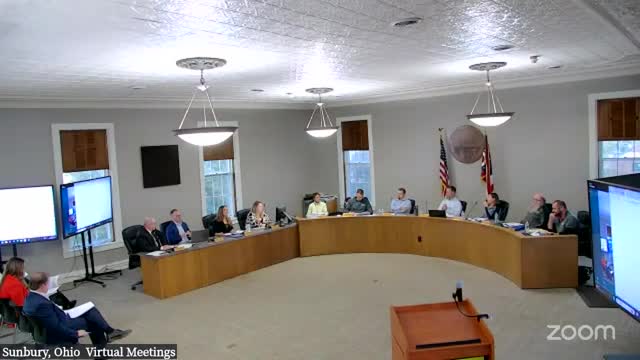Police Fleet Faces Crisis Amid Rising Costs and Delays
October 17, 2024 | Sunbury City, Delaware County, Ohio
This article was created by AI summarizing key points discussed. AI makes mistakes, so for full details and context, please refer to the video of the full meeting. Please report any errors so we can fix them. Report an error »

In a recent government meeting, discussions centered around the challenges faced by the local police department regarding their vehicle fleet. Deputy Chief Wade presented a detailed analysis comparing the financial implications of leasing versus purchasing new police vehicles, a decision complicated by ongoing supply chain issues and rising costs exacerbated by inflation and the COVID-19 pandemic.
The current fleet, which includes various models from 2007 to 2022, has been experiencing significant maintenance challenges, particularly with the 2020 Tahoe models, which have reported overheating and transmission issues. The department's maintenance costs have surged from approximately $8,000 in 2021 to nearly $19,000, prompting a reevaluation of their vehicle acquisition strategy.
Wade outlined the pros and cons of both leasing and purchasing vehicles. Leasing offers a structured payment plan with no mileage restrictions and a five-year, 100,000-mile mechanical warranty, which could mitigate some of the financial risks associated with vehicle ownership. In contrast, purchasing vehicles outright would require a substantial upfront investment, estimated at around $400,000 for a complete fleet upgrade, which is not feasible given the current budget constraints.
The proposed leasing program would allow the department to acquire six vehicles—five upfitted for police use and one unupfitted for administrative tasks—within the existing budget of $80,000. This approach aims to modernize the fleet while spreading costs over five years, thus providing financial flexibility.
Wade emphasized the urgency of the decision, noting that the market for police vehicles is highly competitive, with lead times for new orders stretching from six to eighteen months. The department is keen to secure a reliable fleet to ensure operational efficiency and safety for officers.
The meeting concluded with a recommendation to proceed with the leasing option, allowing for a reassessment of the program's viability after the initial five-year term. This strategic shift aims to address immediate fleet needs while maintaining fiscal responsibility.
The current fleet, which includes various models from 2007 to 2022, has been experiencing significant maintenance challenges, particularly with the 2020 Tahoe models, which have reported overheating and transmission issues. The department's maintenance costs have surged from approximately $8,000 in 2021 to nearly $19,000, prompting a reevaluation of their vehicle acquisition strategy.
Wade outlined the pros and cons of both leasing and purchasing vehicles. Leasing offers a structured payment plan with no mileage restrictions and a five-year, 100,000-mile mechanical warranty, which could mitigate some of the financial risks associated with vehicle ownership. In contrast, purchasing vehicles outright would require a substantial upfront investment, estimated at around $400,000 for a complete fleet upgrade, which is not feasible given the current budget constraints.
The proposed leasing program would allow the department to acquire six vehicles—five upfitted for police use and one unupfitted for administrative tasks—within the existing budget of $80,000. This approach aims to modernize the fleet while spreading costs over five years, thus providing financial flexibility.
Wade emphasized the urgency of the decision, noting that the market for police vehicles is highly competitive, with lead times for new orders stretching from six to eighteen months. The department is keen to secure a reliable fleet to ensure operational efficiency and safety for officers.
The meeting concluded with a recommendation to proceed with the leasing option, allowing for a reassessment of the program's viability after the initial five-year term. This strategic shift aims to address immediate fleet needs while maintaining fiscal responsibility.
View full meeting
This article is based on a recent meeting—watch the full video and explore the complete transcript for deeper insights into the discussion.
View full meeting
